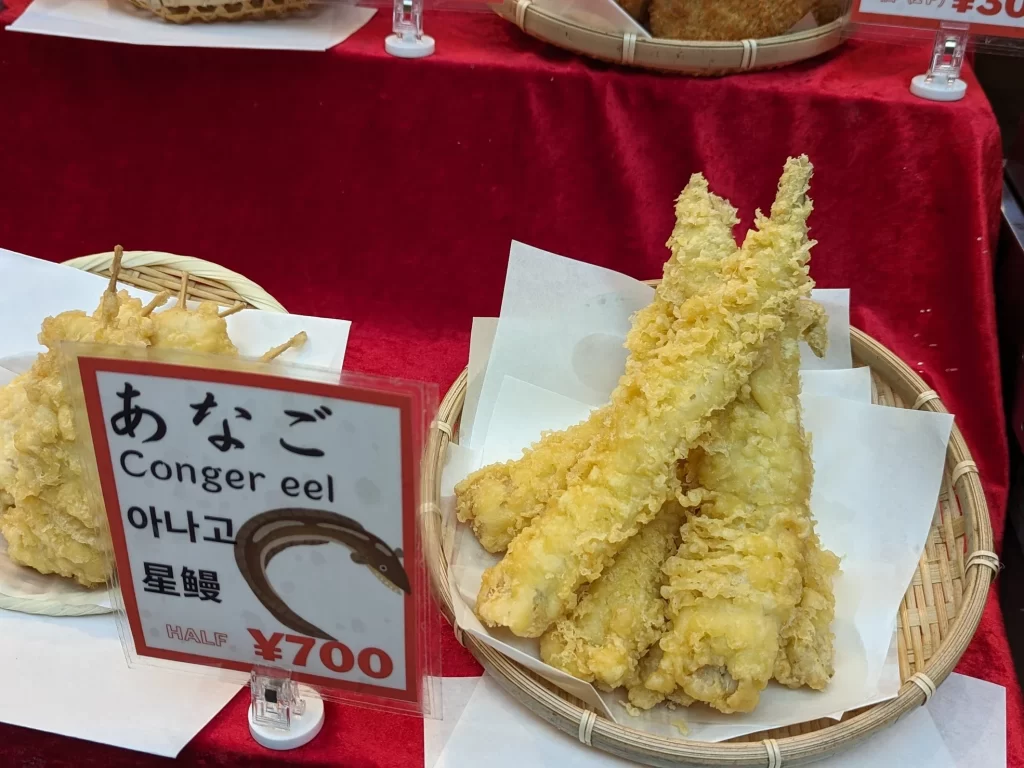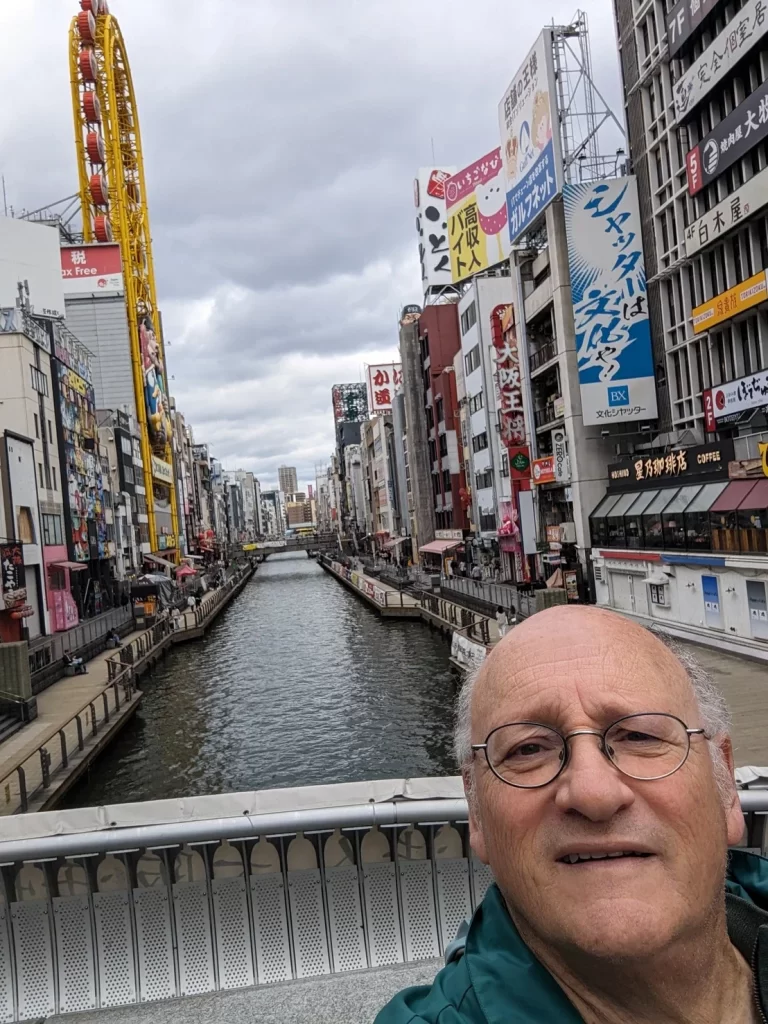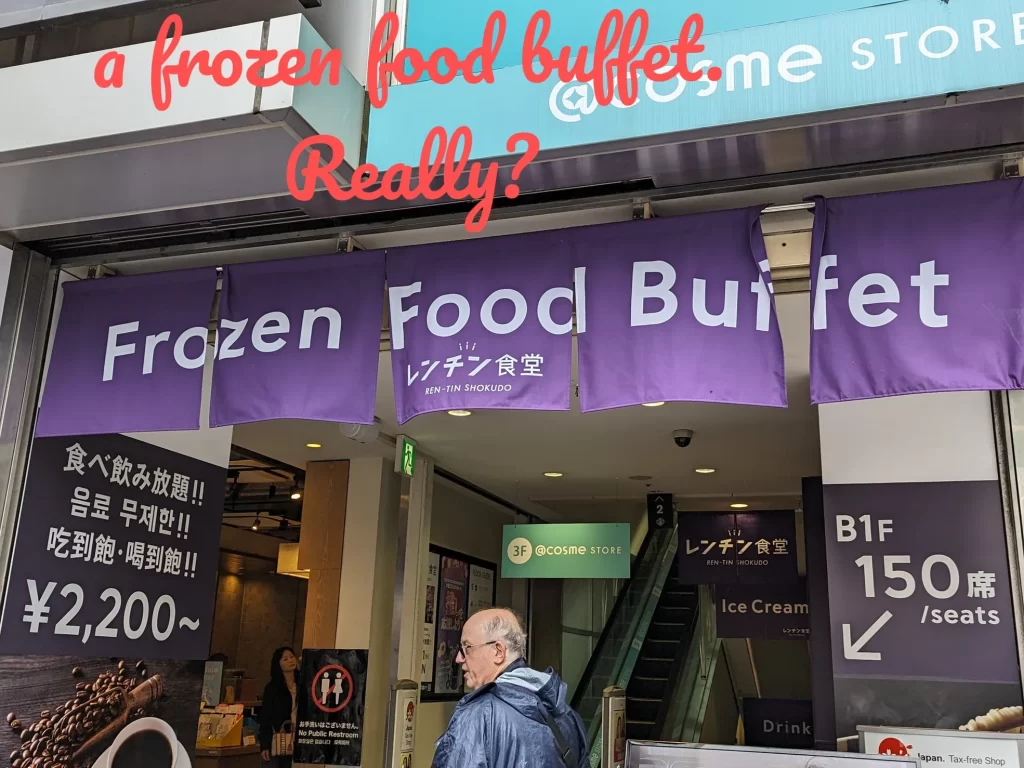Day 2
Osaka
Our hotel was in the Shinsaibashi district of Osaka, which is the city’s main shopping district. And the shopping is done in covered shopping streets, where Louis Vuitton and Christian Dior outlets sit next to discount 100 yen stores, karaoke bars, local shops and cheap restaurants and food stalls. Whilst we had just arrived and were not interested in buying anything, wandering down the arcades was a fascinating introduction to Osaka. Just as we were saying to each other that we felt like a good cup of coffee, which is not so easy in Osaka, we stumbled upon a wood panelled cafe that from the outside looked as if it belonged in Europe more than Japan. From the inside, we narrowed the assumed geography to 1930’s Vienna. A genuine Viennese coffee house in Osaka, Japan. We ordered coffee and mostly old style European food, which included thick white bread toast and jam, and egg sandwiches with the crusts cut off. Yoni, however, got the weird one…cheese toast (perfectly normal) smothered in Japanese curry sauce. It was actually worse than it sounds and that isn’t too attractive to start off with. I guess if you’re doing surreal, then do it all the way.

It’s no secret that a culinary tour is a great way to experience a place’s culture, through delicious, different, and perhaps even challenging, food. We have all participated in many culinary tours over the course of our travels and as such, were excited to be joining such a tour in Japan’s culinary capital. Sometimes reality just doesn’t align with expectations.
Our guide, Nikko, was exceptional in that she offered not a single redeeming feature. Not one. She was weird, but not in an interesting way and was annoying to boot. Her guiding methodology was non existent. Almost every question we asked was met with “I don’t know. Maybe google can tell me”. She took us to places where she always recommended we buy the most expensive items as there was very little food actually offered as part of the tour. There was zero value-added in having her walk with us through Kuromon market. If I’d guided the tour, never previously having been in either Osaka or Kuromon market, I would have led a better tour. From the Kuromon market she led us to a street full of shops selling kitchen ware and utensils. A perfect opportunity to gain an understanding of Japanese world famous kitchen knives and how they are created, or to appreciate the exquisite stoneware or laquer utensils. Nope. We strolled down this fascinating street, receiving zero explanations. At this point, we should have bailed, but were too polite or embarrassed,
The highlight of the torturous 2 hours was her showing us a medical clinic fronted by a caricature of Bill Clinton in doctor’s garb, saying that this was a place we could come to, in order to fix our “night problems”. Gevalt. We would return to the fantastic Kuromon market to sample Osaka’s best a little later, when Nikko was merely a bad joke, a memory of a failed attempt of a food tour.
But before sampling the culinary treasures of the market independently, we needed to take advantage of the fact that a cold snap in March had delayed the sakura, and that the cherry trees were now in full bloom. The gardens surrounding Osaka castle allowed us to stroll 4 km along paths lined with glorious white and pink cherry blossom.
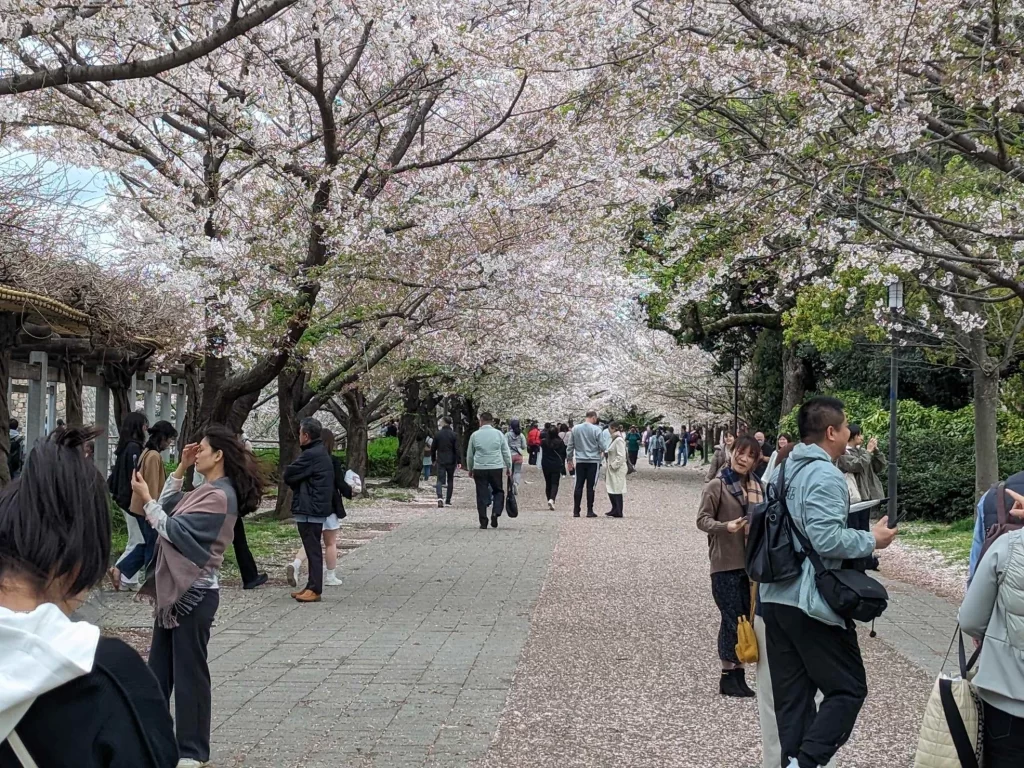
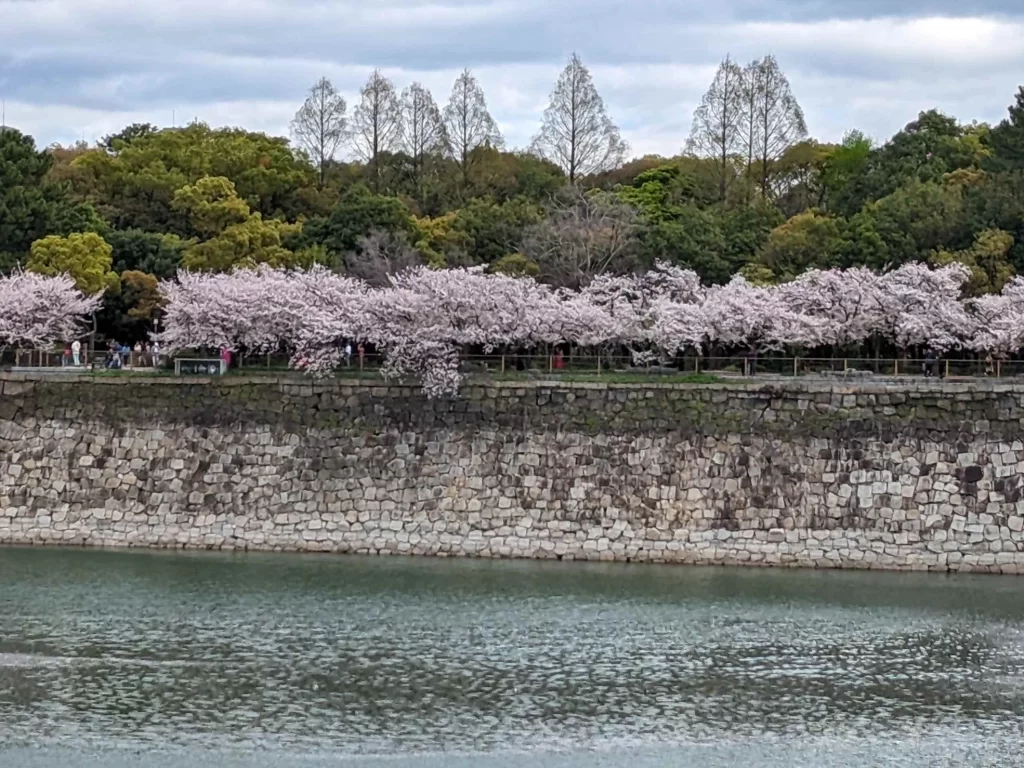
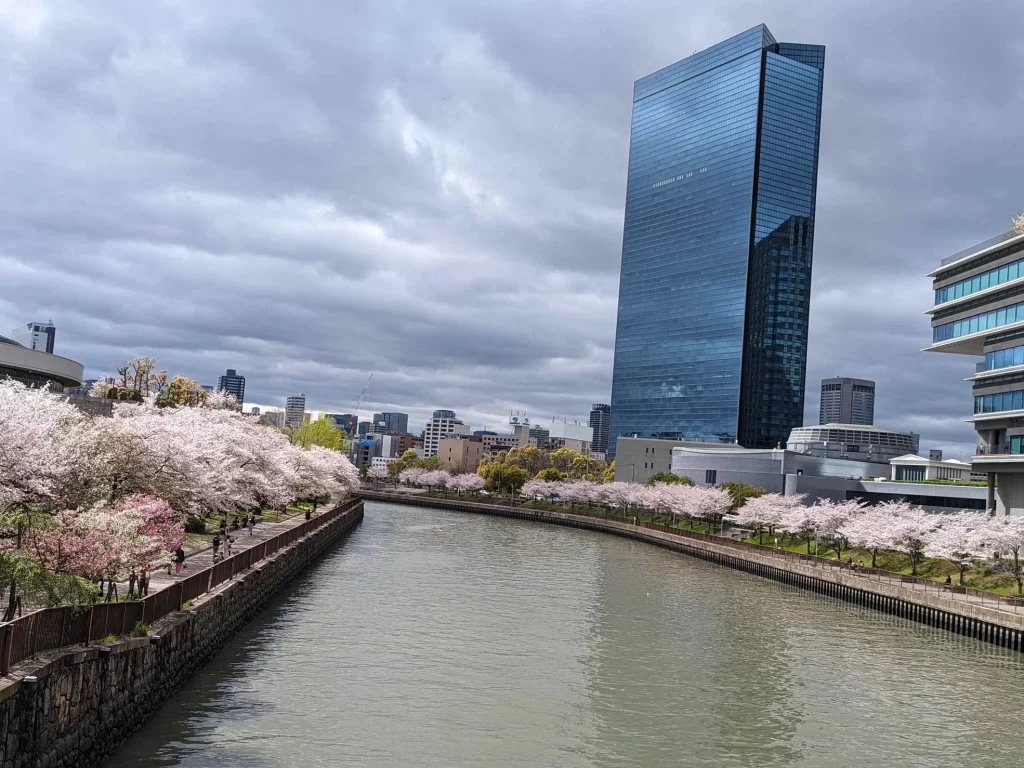
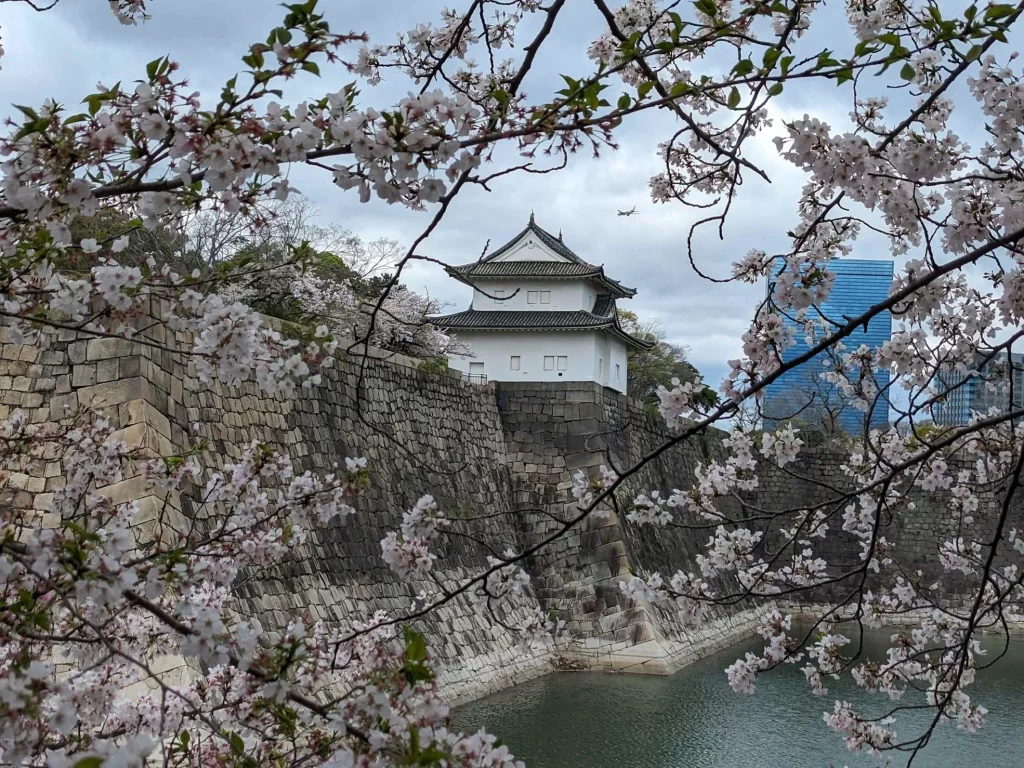
By the time we’d returned to the market and filled our faces with sashimi, sushi, barbecued chicken, skewers of unidentified seafood, fried, battered eel and more, had our photos taken in front of Oska’s iconic Glico Man mural, together with our own Glickoman, and wandered down Dotonbori, we had walked close to 12 km. It was time to return to the hotel to meet Garry, the last of us to arrive, and maybe have a short, mid-afternoon shloof. After all, we were on holiday, and had some heavy duty walking ahead of us in the coming days.
Garry’s arrival coincided perfectly with dinner time. If you see a pattern here, that the varying activities and sightseeing were merely distractions, sandwiched between meals, then you’d be right. In fact, Simon, when asked by his wife Gilly how the chemistry was between us all, answered that our mouths have so far been so full of food that we’d had no opportunity to argue amongst ourselves. Not that we for a single moment worried that there would be friction of any sort.
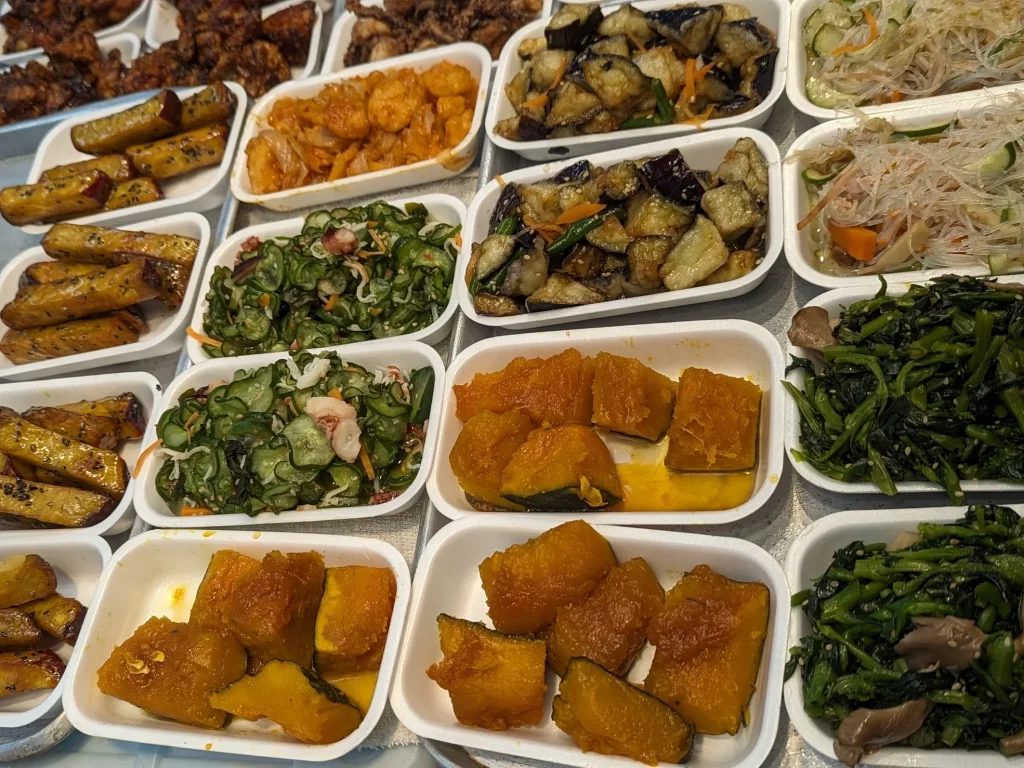

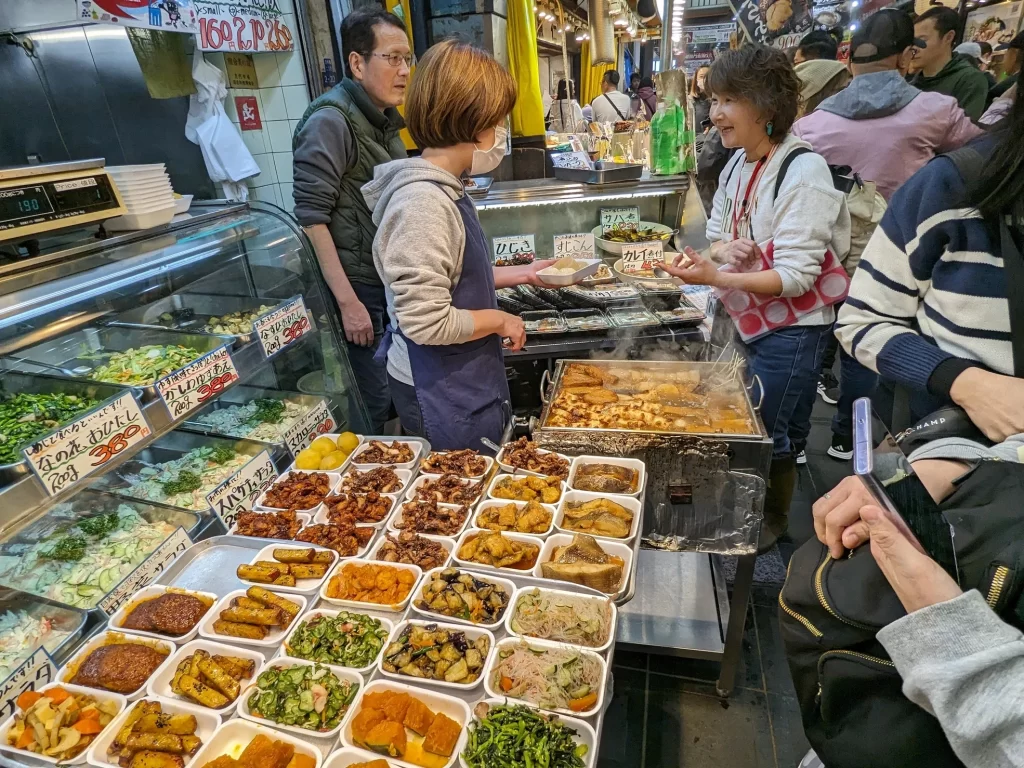
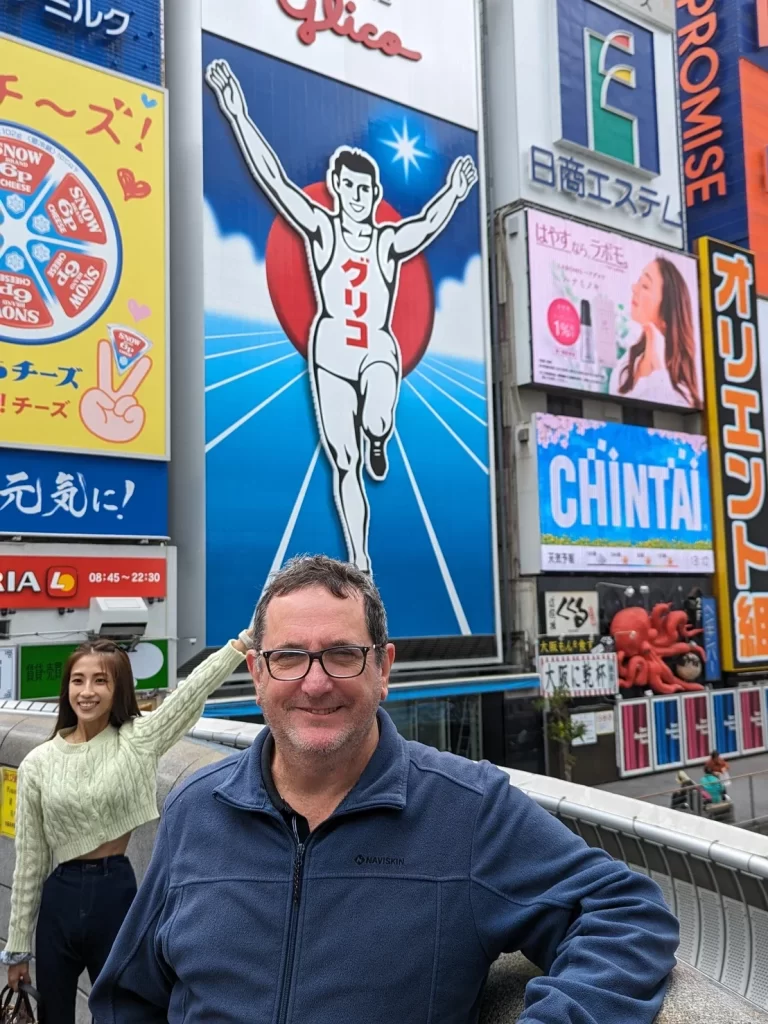
Yoni had picked a restaurant for dinner not too far from our hotel that seemed interesting and not touristed. Upon arrival, it was closed. There was an izakaya (the Japanese version of a tapas bar, serving food as an accompaniment to the drinks they serve) next door, but despite the fact that we saw empty tables amongst the salary-men letting off steam after work, we were told it was full. Twenty metres away another izakaya, equally full of local salary-men, was “about to close”. I had heard of places in Japan that preferred to keep their clientele local, especially in non touristed area such as that we were in. It certainly appeared as if we were experiencing a perhaps unwanted side of Japanese culture. Eventually we found a pretty average place that served pretty average food, but not everything can always be 100% as you want it. When you’re experiencing disappointments with friends, in surroundings that are new and different, it’s still fun.
We had one last fun disappointment to go. In order to squeeze out the last remaining hours of our first full day in Japan we decided to have a nightcap at a local bar. Bar 100 was close to our hotel and seemed the perfect candidate to close off the evening. Hidden down an alley, we descended ten steps to a landing, facing 3 mirrors. It was a bit like Alice in Wonderland where we needed to push the correct mirror that was the door in order to gain entry. The correct mirror opened into a small dark space, with a faint smell of sewage, a bar, five stools, no patrons and a barman/owner/bottlewasher who seemed shocked to find 4 gaijin wandering into his empty establishment. It became obvious very quickly that he knew less English than we did Japanese, in itself an impossible feat, and that he didn’t serve saki. He did serve, however, shochu, a Japanese spirit made from distilled rice, barley or sweet potato (I kid you not), though carrots, chestnuts,or potatoes are also sometimes distilled. I guess if the Poles can distil anything and everything to make vodka, then the Japanese can too, in order to make their version of vodka… shochu. No matter. It tasted weird, once again, not necessarily in the good way. But it wasn’t terrible, either. At least the bar wasn’t too far from our hotel. And for all the things that perhaps, on the face of it, weren’t exactly as we thought they would be, the day was no less enjoyable, amazing and full of laughs.
